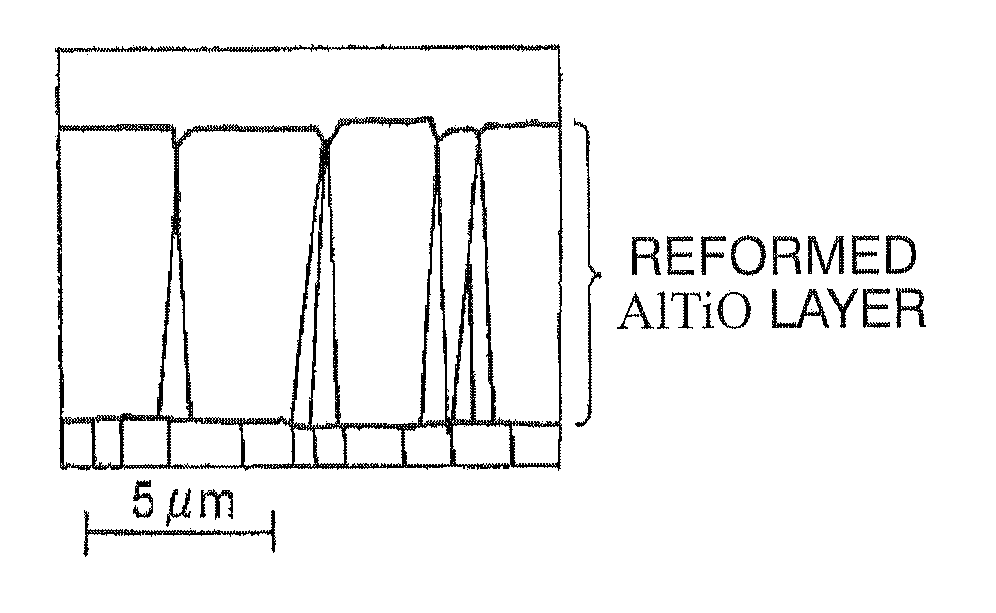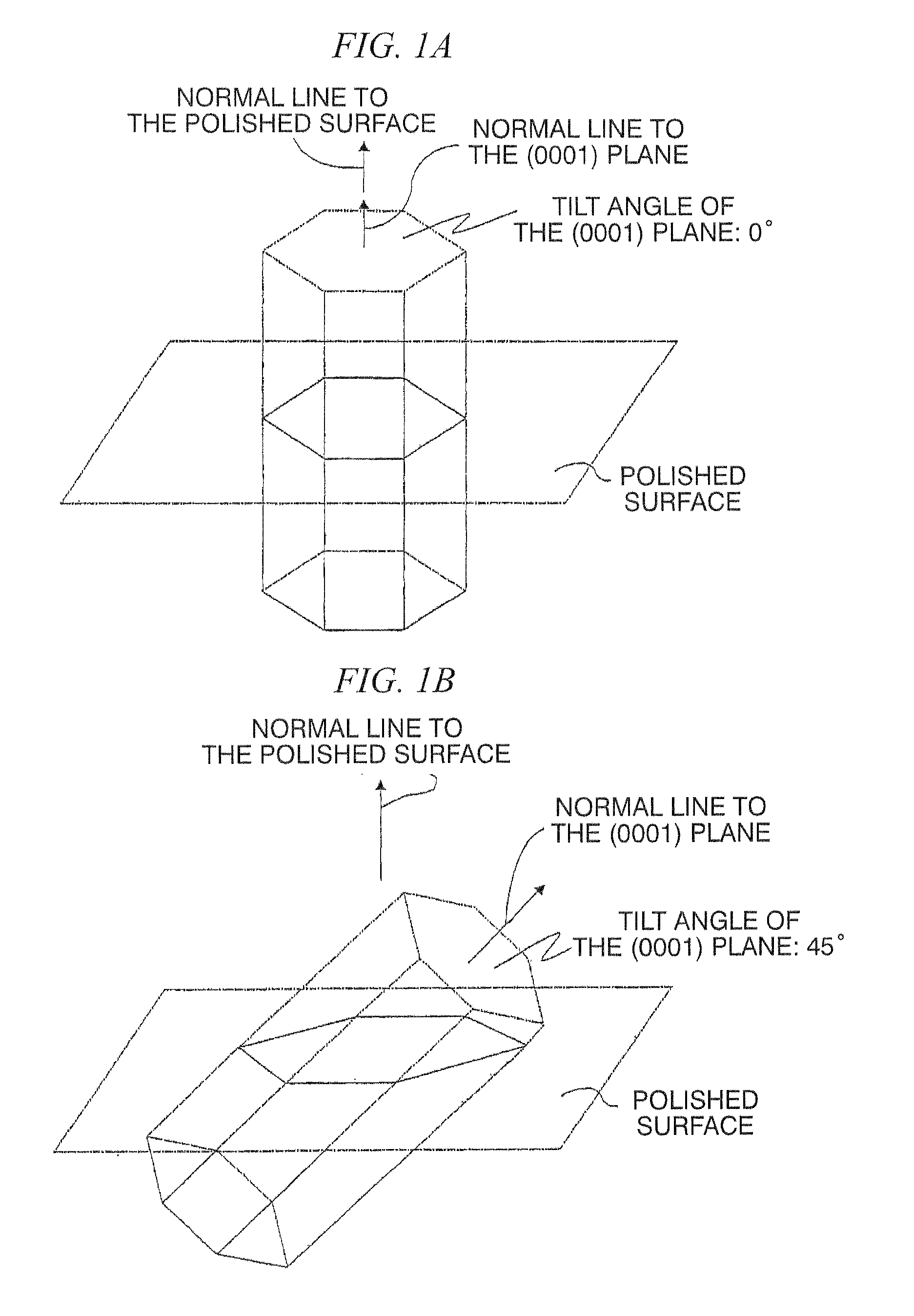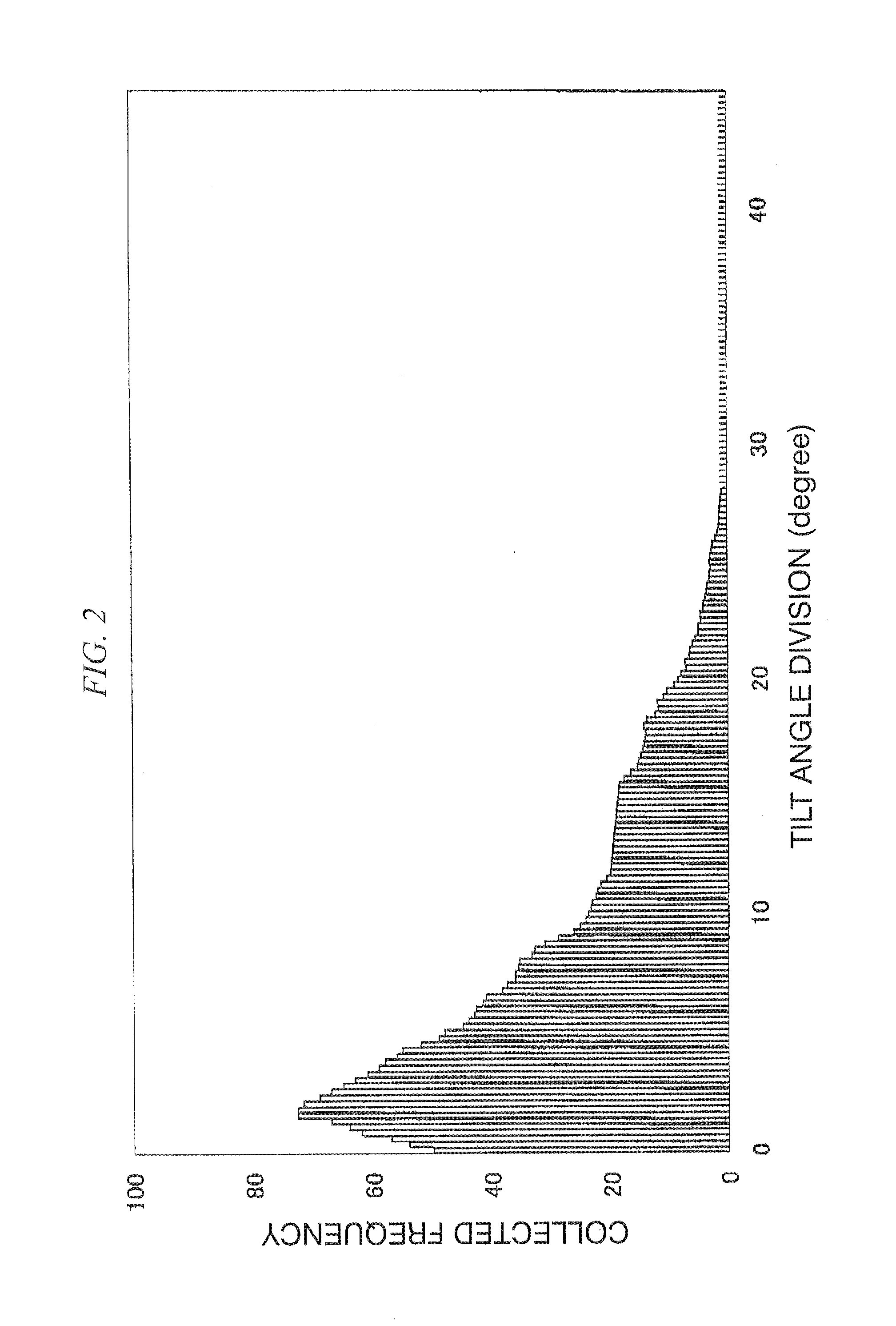Surface-coated cutting tool
a cutting tool and surface coating technology, applied in manufacturing tools, superimposed coating processes, transportation and packaging, etc., can solve the problems of easy chipping (fine chipping) on the cutting edge, the life of the coated tool is approaching the end of its usable life, and the high temperature strength and surface properties of the hard coating layer are not adequate, etc., to achieve excellent high temperature hardness and heat resistance, excellent high-temperature strength, and enhanced strength within the crystal grains
- Summary
- Abstract
- Description
- Claims
- Application Information
AI Technical Summary
Benefits of technology
Problems solved by technology
Method used
Image
Examples
first embodiment
[0076](a) The conventional α-type Al2O3 layer in the conventional coated tool 1 is vapor-deposited, for example, using a normal chemical vapor deposition apparatus under the following conditions.
[0077]Composition of reaction gas: in vol. %, 6 to 10% of AlCl3, 10 to 15% of CO2, 3 to 5% of HCl, 0.05 to 0.2% of H2S, and H2 as balance
[0078]Reaction atmosphere temperature: 1020 to 1050° C.
[0079]Reaction atmosphere pressure: 3 to 5 kPa
[0080]On the other hand, the α-type Al2O3 layer in the present invention corresponding to the intermediate layer 12B is formed, using a normal chemical vapor deposition apparatus under the following conditions.
[0081]Composition of reaction gas: in vol. %, 3 to 10% of AlCl3, 0.5 to 3% of CO2, 0.01 to 0.3% of C2H4, and H2 as balance
[0082]Reaction atmosphere temperature: 750 to 900° C.
[0083]Reaction atmosphere pressure: 3 to 13 kPa
[0084]An Al2O3 neclear is formed on the surface of a Ti compound layer which is the lower layer 12A under the low-temperature condit...
second embodiment
[0171]A coated tool of the second embodiment of the present invention has the following configuration.
[0172](a) The conventional α-type Al2O3 layer in the conventional coated tool 1 is vapor-deposited, for example, using a normal chemical vapor deposition apparatus under the following conditions.
[0173]Composition of reaction gas: in vol. %, 6 to 10% of AlCl3, 10 to 15% of CO2, 3 to 5% of HCl, 0.05 to 0.2% of H2S, and H2 as balance
[0174]Reaction atmosphere temperature: 1020 to 1050° C.
[0175]Reaction atmosphere pressure: 3 to 5 kPa
[0176]In the second embodiment, an Al2O3 neclear is formed on the surface of a Ti compound layer, which is a lower layer, using a standard chemical vapor deposition apparatus under the following low-temperature conditions: composition of reaction gas, in vol. %, 3 to 10% of AlCl3, 0.5 to 3% of CO2, 0.01 to 0.3% of C2H4, and H2 as balance; reaction atmosphere temperature, 750 to 900° C.; reaction atmosphere pressure, 3 to 13 kPa.
[0177]An Al2O3 neclear is form...
third embodiment
[0266]A third embodiment of the present invention includes the following aspects.
[0267](a) The conventional α-type Al2O3 layer in the conventional coated tool 1 is vapor-deposited, for example, using a normal chemical vapor deposition apparatus under the following conditions.
[0268]Composition of reaction gas: in vol. %, 6 to 10% of AlCl3, 10 to 15% of CO2, 3 to 5% of HCl, 0.05 to 0.2% of H2S, and H2 as balance
[0269]Reaction atmosphere temperature: 1020 to 1050° C.
[0270]Reaction atmosphere pressure: 3 to 5 kPa
[0271]On the other hand, the α-type Al2O3 layer in the present invention corresponding to the intermediate layer is formed, using a normal chemical vapor deposition apparatus under the following low-temperature conditions.
[0272]Composition of reaction gas: in vol. %, 3 to 10% of AlCl3, 0.5 to 3% of CO2, 0.01 to 0.3% of C2H4, and H2 as balance
[0273]Reaction atmosphere temperature: 750 to 900° C.
[0274]Reaction atmosphere pressure: 3 to 13 kPa
[0275]In this case, it is desirable tha...
PUM
| Property | Measurement | Unit |
|---|---|---|
| Length | aaaaa | aaaaa |
| Length | aaaaa | aaaaa |
| Length | aaaaa | aaaaa |
Abstract
Description
Claims
Application Information
 Login to View More
Login to View More - R&D
- Intellectual Property
- Life Sciences
- Materials
- Tech Scout
- Unparalleled Data Quality
- Higher Quality Content
- 60% Fewer Hallucinations
Browse by: Latest US Patents, China's latest patents, Technical Efficacy Thesaurus, Application Domain, Technology Topic, Popular Technical Reports.
© 2025 PatSnap. All rights reserved.Legal|Privacy policy|Modern Slavery Act Transparency Statement|Sitemap|About US| Contact US: help@patsnap.com



